Posté par Florence Fesneau, le 10 février 2025;
- Date et lieu de la conférence : 13 février 2025, Paris

Johann Lorenz Haid (d’après Giovanni Battista Piazzetta), Homme à la loupe, vers 1740, manière noire. © Bratislava, Múzeum mesta Bratislavy.
Conférence du GRHAM : Le connoisseur en action : révolution optique et théorie de l’art (XVIIe-XVIIIe siècles), (Paris, 13/02/2025)
Type : conférence (entrée libre et gratuite) Date et horaire : jeudi 13 février à 19h. Un pot de l’amitié suivra la conférence. Lieu : salle René Jullian (premier étage), Galerie Colbert (Institut National d’Histoire de l’Art), 2 Rue Vivienne, 75002 Paris. Pour tout renseignement et pour l’inscription Zoom : asso.grham@gmail.com
S’il est bien connu que la révolution optique a complètement bouleversé notre perception . . . → En lire plus
Posté par Olivier Bonfait, le 28 janvier 2025;
 rencontres Jean-Louis Cohen rencontres Jean-Louis Cohen
12 juin à la Cité de l’architecture & le 2 octobre à l’Ensa-PB
Héritages et perspectives | Legacy and Perspectives
Après la disparition soudaine de Jean-Louis Cohen en 2023, nous souhaitons revenir sur les héritages qu’il nous a transmis et nous interroger sur les perspectives qu’il a contribué à ouvrir pour l’histoire de l’architecture. Plus que d’organiser un hommage, il s’agit de réfléchir collectivement aux chantiers intellectuels qu’il a alimentés et parfois suscités, marquant plusieurs générations de chercheuses et chercheurs. Quel est le legs de la pensée et de l’action de cet historien qui nous anime aujourd’hui ? Comment nous en emparons nous, pour déployer de nouvelles pistes . . . → En lire plus
Posté par Olivier Bonfait, le 20 janvier 2025;
- Date limite : 30 avril 2025
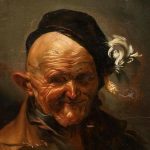 Prestiges de la laideur. Peindre et penser la laideur de l’Antiquité au romantisme Prestiges de la laideur. Peindre et penser la laideur de l’Antiquité au romantisme
Colloque international, Sorbonne Université (Centre de Recherches en Littérature Comparée)/ Université de Lorraine (Littérature, Imaginaire, Sociétés) Maison de la Recherche de Sorbonne-Université, 27 et 28 novembre 2025 date limite pour les propositions : 30 avril
Présentation Dans son essai Fascination de la laideur (1978), Murielle Gagnebin ouvrait son chapitre consacré à « l’histoire du laid » en faisant remarquer que « les traités d’esthétique abordent la philosophie de l’art par le biais exclusivement – ou presque ! – de la beauté[1] ». On pourrait certes nuancer ce constat, quelque peu oublieux de l’Esthétique . . . → En lire plus
Posté par Olivier Bonfait, le 13 janvier 2025;
- Date limite : 15 mars 2025
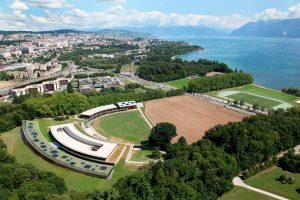 Présentation La section d’histoire de l’art de la Faculté des lettres de l’Université de Lausanne met au concours un poste de doctorant.e FNS dans le domaine de l’histoire de l’art contemporain.
Informations liées au poste
Entrée en fonction : 1er juin 2025
Durée du contrat : 1 an, renouvelable une fois pour trois ans.
Taux d’activité : 100%
Lieu de travail : Lausanne-Dorigny
Vos activités
Selon la Directive 1.31 de l’Université de Lausanne, le taux d’activité d’un.e doctorant.e FNS est dédié à 85% à la réalisation d’une . . . → En lire plus
Posté par Vladimir Nestorov, le 11 janvier 2025;
- date limite des propositions : 31 janvier 2025
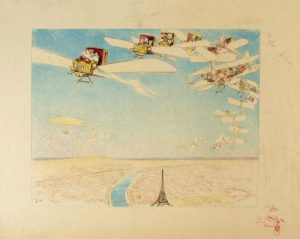 Journées d’étude : «Ville désirable / ville désirée : construire les imaginaires urbains par le visuel (XVIIIe-XXIe) » (Lyon, 10-11 juin 2025) Journées d’étude : «Ville désirable / ville désirée : construire les imaginaires urbains par le visuel (XVIIIe-XXIe) » (Lyon, 10-11 juin 2025)
Résumé Les journées d’étude « Ville désirable / ville désirée : construire les imaginaires urbains par le visuel (XVIIIe-XXIe) », placent la notion de désir, jusqu’ici particulièrement investie par les études psychologiques et psychanalytiques, au cœur des interactions entre la ville et ses images. L’idée d’absence, de manque, ou d’envie à laquelle renvoie cette notion permet de relire et réinterpréter certaines productions visuelles urbaines produites entre le XVIIIème et le XXIème siècles. Si certains travaux notamment en géographie se sont intéressés à l’attractivité (Michel Lussault) ou . . . → En lire plus
Posté par Olivier Bonfait, le 29 décembre 2024;
- Date limite : 15 février 2025
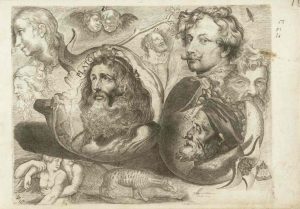
Michael Snijders (1610-1672), Feuille d’étude avec têtes, figures, animaux et végétaux, s.d., eau-forte, Amsterdam, Rijksmuseum.
Faire image au XVIIe siècle
Paris, INHA (Salle Vasari), 10-11 juillet 2025 Appel à candidatures
Image. f. f. Représentation d’une chose en sculpture, peinture, gravure. Les images des faux Dieux ; les images des Saints ; une belle image ; une image bien faite, bien ressemblante ; l’image du Roy ; briser, rompre les images ; abattre les images ; il faut honorer les images des Saints. Il se dit plus particulièrement des estampes. Image en taille-douce ; en taille de . . . → En lire plus
Posté par Olivier Bonfait, le 9 décembre 2024;
- Date et lieu de la conférence : Centre allemande d'histoire de l'art, Paris, jeudi 12 décembre 2024, 18h
 Jeudi 12. décembre 2024 18:00 Jeudi 12. décembre 2024 18:00
The frame and its support. About zones of transitions in decorated ceilings.
Maarten Delbeke, professeur d’histoire et de théorie de l’architecture, ETH, Zurich
The talk will explore two related themes: the definition of the frame, and of the illusionism that it enables. Starting from some examples of ceilings where the relation between wall and frame is made explicit, the talk will connect the use of the frame with ongoing discussions in architecture about the profile and its transformation into the rocaille. It will then try to read the relationship between the frame and what it contains as . . . → En lire plus
Posté par Olivier Bonfait, le 1 décembre 2024;
- Date limite : 6 janv. 2025
What can pictures still do in the 21st century? Figuring reality in visual arts
Université Bordeaux Montaigne
This conference aims to examine the question of figurative art at the beginning of the 21st century. Nowadays, figurative artistic models are challenged by increasingly sophisticated technologies that reshape our definition of “the real,” and more particularly, of reality. AI-generated images tend to normalize manipulated and distorted representations of the world we live in and can sometimes become indistinguishable from real images (“deepfakes”).
In the context of art production, the concepts of realism and reality are usually considered in relation to the question of aesthetic mimesis. The most widespread assumption is that figurative art is not some form of copying of reality, but its representation through a specific medium. The following . . . → En lire plus
Posté par Olivier Bonfait, le 29 novembre 2024;
- Date limite : 10 janvier 2025
Colloque international « Interactions interespèces dans les arts visuels (1550-1914). Collaborations, expérimentations, oppositions » Lyon, 21-22-23 mai 2025
Si les représentations d’animaux abondent dans l’art occidental, souvent convoquées par l’iconographie pour soutenir des interprétations symboliques des œuvres, les bêtes sont cependant rarement envisagées pour elles-mêmes par la recherche académique, malgré les nombreux appels à “regarder les animaux” (Berger, 1980). Depuis une quarantaine d’années, la place des animaux fait l’objet d’un intérêt croissant de la part des historien.ne.s et des historien.ne.s de l’art, particulièrement dans le monde anglo-saxon, et gagne progressivement du terrain dans d’autres régions, et notamment dans la recherche française. Ce regain d’attention s’inscrit dans un mouvement plus vaste de reconsidération des rapports entre humains et non-humains, mettant en lumière les multiples façons dont les animaux sont représentés, perçus . . . → En lire plus
Posté par Olivier Bonfait, le 25 novembre 2024;
- Date et lieu de la rencontre : 13 décembre 2024, Sciences Po, Campus de Paris
Dans le cadre du colloque du 40e anniversaire du Centre d’histoire de Sciences Po (11-13 décembre 2024), Frédérique Leichter-Flack (CHSP) et Thibault Boulvain (CHSP) organisent le 13 décembre prochain (14h30-17h00, Sciences Po, Campus de Paris) une table ronde intitulée « Histoire de l’art, histoire de la littérature : quels canons et quels curricula ? « , avec
Vincent Casanova, Editions du Seuil David Damrosch, Harvard University Alexandre Gefen, CNRS Anne Lafont, EHESS – CRAL – CEHTA Neil MacGregor, ancien directeur de la National Gallery et du British Museum (Londres), ancien directeur fondateur du Humboldt Forum (Berlin) Gisèle Sapiro, EHESS
Qu’entend-on par « littérature mondiale », et quelles œuvres inscrire sous cette bannière, au présent comme au passé ? Y a-t-il quelque chose comme un « art global . . . → En lire plus
Posté par Olivier Bonfait, le 18 novembre 2024;
- Date et lieu de la conférence : 26 novembre, 18-20h, Sciences Po
Le Comité français d’histoire de l’art inaugure un cycle de « Conversations ». La première d’entre elle, sous la forme d’une table ronde, aura lieu le 26 novembre 2024 autour des « Images insupportables », avec le soutien du Centre d’histoire et de la Maison des Arts et de la Création de Sciences Po, avec la participation de Laurence Bertrand Dorléac, Nathalie Bondil, Peter Geimer, Jérémie Koering, François-René Martin, Christine Vidal.
Lieu : Sciences Po, salle François Goguel, Bâtiment B (56, rue des Saint-Pères), 5e étage (entrée par le 27, rue Saint-Guillaume), 18h-20h.
L’événement est également accessible à distance. Merci de vous inscrire, que ce soit pour assister à distance ou en présence, sur ce lien.
Affiche de l’événement : Images insupportables
Nous vous espérons nombreux . . . → En lire plus
Posté par Olivier Bonfait, le 30 octobre 2024;
- Date limite : 15 nov. 2024
Objects and everyday life in Early Modern Latin America art, crafts, and material culture in light of the encounter with European travellers.
Paris, C2RMF, Feb 12, 2025
Colonial studies in recent years are increasingly bringing attention to topics that go beyond purely historical, geographical, or ethical issues. There is also a desire to focus on aspects of everyday life, on the elements that constituted moments of family routine, the rituals of cult activities, the spheres of work, like handicrafts, agriculture, and commerce, or personal affairs. In this field, research from a variety of disciplines is mixed, collaborating with each other to search for sources from which information can be drawn, and to analyse their contents in order to reconstruct contexts and narratives that can give us glimpses of . . . → En lire plus
Posté par Elliot ADAM, le 25 octobre 2024;
- Date : 21-22 novembre 2024
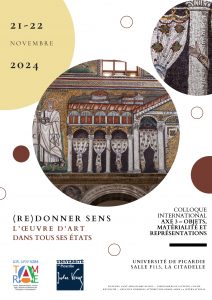 Colloque : « (Re)donner sens : l’œuvre d’art dans tous ses états » (Amiens, Université de Picardie, 21-22 novembre 2024) Colloque : « (Re)donner sens : l’œuvre d’art dans tous ses états » (Amiens, Université de Picardie, 21-22 novembre 2024)
Organisé par l’axe 3 « Objets, matérialité, représentations » de l’UR 4284 TrAme de l’Université de Picardie Jules Verne, le colloque international interroge l’œuvre d’art sous l’angle des états successifs de ses formes, thèmes ou motifs, en portant une attention toute particulière à sa matérialité. Comment identifier ces états successifs et leurs causes, intentionnelles ou fortuites ? Quel contexte, technique ou historique, les a rendus possibles ou nécessaires ? Qui en sont les acteurs, distincts ou identiques . . . → En lire plus
Posté par Olivier Bonfait, le 24 octobre 2024;
- Date et lieu de la rencontre : Lundi 18 novembre à 20h, Majestic Bastille
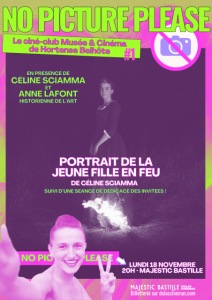 Lundi 18 novembre à 20h au Majestic Bastille Lundi 18 novembre à 20h au Majestic Bastille
NO PICTURE PLEASE #1 Le ciné-club d’Hortense Belhôte : Portrait de la jeune fille en feu en présence de Céline Sciamma
NO PICTURE PLEASE !
Un tout nouveau ciné-club Musée et Cinéma animé par Hortense Belhôte à retrouver 5 fois dans l’année au Majestic Bastille.
Hortense s’interroge sur les liens entre le cinéma et le musée, à l’aide de projections et d’invités issus des deux univers. Chaque séance débute par une courte problématisation du thème du jour par Hortense à l’aide de tableaux et de photogrammes. S’en suit une projection d’un long métrage . . . → En lire plus
Posté par Olivier Bonfait, le 24 octobre 2024;
- Date limite : 3 janvier 2025
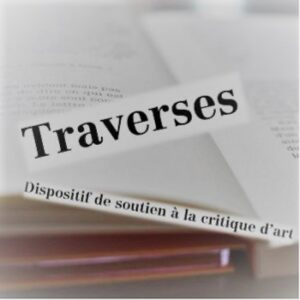 L’Institut français, en partenariat avec le ministère de la Culture – Direction générale de la création artistique et les Archives de la critique d’art s’associent pour promouvoir l’activité critique et théorique française portant sur la création artistique des années 1960 à nos jours et sa diffusion à l’international. « Traverses » signifie l’originalité de tous ces sentiers qui appartiennent au domaine du sensible et qui relient l’art visuel à l’écrit. Le dispositif propose un chemin de traverse pour arriver plus vite depuis la création à la publication et à la diffusion de l’écriture critique. Le dispositif « Traverses » a pour objet de soutenir la production, la publication . . . → En lire plus L’Institut français, en partenariat avec le ministère de la Culture – Direction générale de la création artistique et les Archives de la critique d’art s’associent pour promouvoir l’activité critique et théorique française portant sur la création artistique des années 1960 à nos jours et sa diffusion à l’international. « Traverses » signifie l’originalité de tous ces sentiers qui appartiennent au domaine du sensible et qui relient l’art visuel à l’écrit. Le dispositif propose un chemin de traverse pour arriver plus vite depuis la création à la publication et à la diffusion de l’écriture critique. Le dispositif « Traverses » a pour objet de soutenir la production, la publication . . . → En lire plus
Posté par Olivier Bonfait, le 15 octobre 2024;
- Date limite : 12 nov. 2024
The Research and Academic Program (RAP) at the Clark Art Institute is pleased to invite papers from graduate students for a one-day symposium, “Queer Palimpsests: Rewriting Medieval Art History” on April 11th, to be held in person at the Clark in Williamstown, Massachusetts. In the Middle Ages, palimpsests were parchments whose original text or imagery was effaced in order to reuse their valuable substrate. A transliteration of the Greek word παλίμψηστος (palimpsestos), palimpsest literally means “scraped again,” denoting the process of scraping or rubbing a piece of parchment. Sometimes this repurposing was achieved hastily, leaving behind traces of the original text or image. Beyond its literal meaning, today the term has gained other metaphorical resonances. Collapsing iterations of writing and/or image on the same page, palimpsests evoke questions . . . → En lire plus
Posté par jcerman, le 13 octobre 2024;
- date limite des propositions : 24 novembre 2024
Appel à communications : « Violence et destruction » (Doctoriales de la SERD)
Les Doctoriales de la Société des Études Romantiques et Dix-neuviémistes (SERD) sont ouvertes à tous les doctorants et jeunes docteurs dont les recherches portent sur le XIXe siècle, en France et à l’étranger. En collaboration étroite avec les activités de la SERD, les Doctoriales de la SERD participent à l’organisation de l’Atelier du XIXe siècle. Les Doctoriales de la SERD mènent également un projet de recherche indépendant, qui donne lieu à des publications en ligne ainsi qu’à l’organisation d’un colloque. Pour s’inscrire sur la liste de diffusion : contact.doctoriales.serd@gmail.com
Le séminaire a pour vocation de donner la parole aux jeunes chercheurs et chercheuses. Le séminaire est organisé autour d’un thème choisi pour deux ans mais porte également . . . → En lire plus
Posté par Olivier Bonfait, le 6 octobre 2024;
 Émilie Chedeville, Un Sacro Monte à Paris. Le Calvaire du Mont-Valérien au XVIIe siècle, Paris, 2024. Émilie Chedeville, Un Sacro Monte à Paris. Le Calvaire du Mont-Valérien au XVIIe siècle, Paris, 2024.
éd. 1 : 1, coll. ars, 114 p., 32 ill. ISBN: 979-10-97193-09-6 20 euros.
Pour se procurer l’ouvrage sur le site de l’éditeur : https://editions1sur1.wordpress.com/home/
La tradition des montagnes saintes, théâtres de grands événements qui en font des lieux hautement symboliques incarnant dans une efficace topographique un poids historique, est renouvelée au Mont-Valérien au début du XVIIe siècle grâce à un effort de narration, de figuration de l’histoire, ici déterminante pour le salut du genre humain, puisqu’il s’agit de la Passion . . . → En lire plus
Posté par Olivier Bonfait, le 2 octobre 2024;
- Date limite : 23 octobre 2024
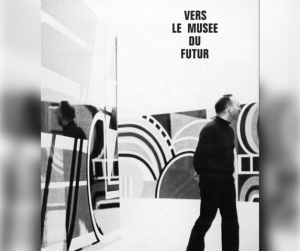
Auteur inconnu. ARC, 1969: «Dewasne commence la Longue Marche…». Illustration de la série d’articles de Yann Pavie, «Vers le musée du futur», Opus International n°28, novembre 1971.
L’Université Rennes 2 organise le mardi 8 avril 2025 une journée d’étude intitulée « Critique d’art et musée : dynamiques et enjeux d’une relation au XXe siècle ». Cet évènement aura lieu en présentiel et pourra être suivi par visioconférence.
Présentation de la journée d’étude Le 18 mai 1968, à Paris, un groupe de critiques d’art manifestant se rassemble aux abords de l’avenue du Président Wilson, portant l’ambition d’occuper le Musée National d’Art Moderne. . . . → En lire plus
Posté par Damien Delille, le 30 septembre 2024;
- date limite des propositions : 17 février 2025
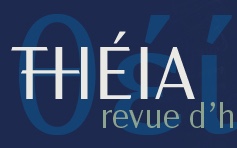 Appel à publication : Revue Théia – Appel à Varia et Notes et Documents Appel à publication : Revue Théia – Appel à Varia et Notes et Documents
Théia. Revue d’histoire et d’histoire de l’art(english version below)
Theia. Revue d’histoire et histoire de l’art est une jeune revue scientifique en Open Access consacrée à la recherche en histoire et en histoire de l’art des périodes modernes et contemporaines (XVe s.-XXIe s.). Les interactions entre histoire et histoire de l’art, par le biais notamment des cultures visuelles et matérielles, forment un des socles importants de la revue. Les articles sont publiés dans l’une des cinq langues suivantes : français, anglais, espagnol, italien, allemand.Le 2e numéro thématique à l’automne 2025, coordonné par Damien Delille et Emmanuelle Retaillaud, . . . → En lire plus
|
Équipe Rédacteur en chef : Olivier Bonfait.
Rédacteurs : Elliot Adam (Moyen Age) ; Nicolas Ballet (XX-XXIe siècles) ; Matthieu Fantoni (musées) ; Antonella Fenech Kroke (bourses) ; Vladimir Nestorov (Lettre mensuelle)
Administrateur web : Matthieu Lett.
ancien éditeur : Pascale Dubus
anciens rédacteurs : Gautier Anceau, Sébastien Bontemps, Damien Bril ; Sébastien Chauffour ; Ludovic Jouvet ; Aude Prigot
|













